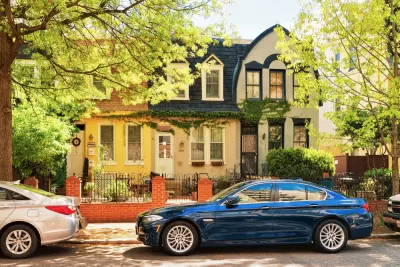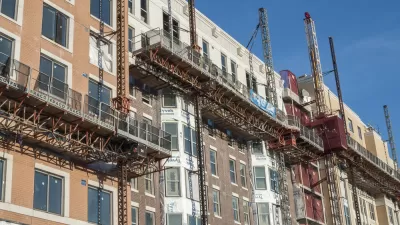New research by Jenny Schuetz shows that already-expensive neighborhoods in D.C., zoned for low-density single-family homes, are not doing their part in adding new supply to meet rising demand.

Jenny Schuetz shares new research that finds that where housing prices are increasing fastest in D.C., zoning has prevented any new housing from being added.
According to Schuetz's premise for the research, the facts on the ground don't live up to the promises of politicians, like D.C. Mayor Muriel Bowser, who has promised to build new homes in "every ward and every neighborhood" to prevent displacement in lower-income and minority communities.
A fundamental principle of economics is that when the price of goods or services increases, producers will increase supply. Therefore, when the price of housing in certain cities or neighborhoods increases, developers should build more homes. And indeed, District neighborhoods that saw higher growth in housing values did see more new housing construction—but only where restrictive zoning didn’t impede growth.
To illustrate the point, Schuetz shares graphs an also digs into specific census tracts. The larger conclusion Schuetz builds from these findings is that restrictive zoning exacerbates affordability by limiting new construction and incentivizing upgrades and upsizing, which leads in turn to higher costs.
FULL STORY: Restrictive zoning is impeding DC’s goal to build more housing

Planetizen Federal Action Tracker
A weekly monitor of how Trump’s orders and actions are impacting planners and planning in America.

Chicago’s Ghost Rails
Just beneath the surface of the modern city lie the remnants of its expansive early 20th-century streetcar system.

San Antonio and Austin are Fusing Into one Massive Megaregion
The region spanning the two central Texas cities is growing fast, posing challenges for local infrastructure and water supplies.

Since Zion's Shuttles Went Electric “The Smog is Gone”
Visitors to Zion National Park can enjoy the canyon via the nation’s first fully electric park shuttle system.

Trump Distributing DOT Safety Funds at 1/10 Rate of Biden
Funds for Safe Streets and other transportation safety and equity programs are being held up by administrative reviews and conflicts with the Trump administration’s priorities.

German Cities Subsidize Taxis for Women Amid Wave of Violence
Free or low-cost taxi rides can help women navigate cities more safely, but critics say the programs don't address the root causes of violence against women.
Urban Design for Planners 1: Software Tools
This six-course series explores essential urban design concepts using open source software and equips planners with the tools they need to participate fully in the urban design process.
Planning for Universal Design
Learn the tools for implementing Universal Design in planning regulations.
planning NEXT
Appalachian Highlands Housing Partners
Mpact (founded as Rail~Volution)
City of Camden Redevelopment Agency
City of Astoria
City of Portland
City of Laramie




























